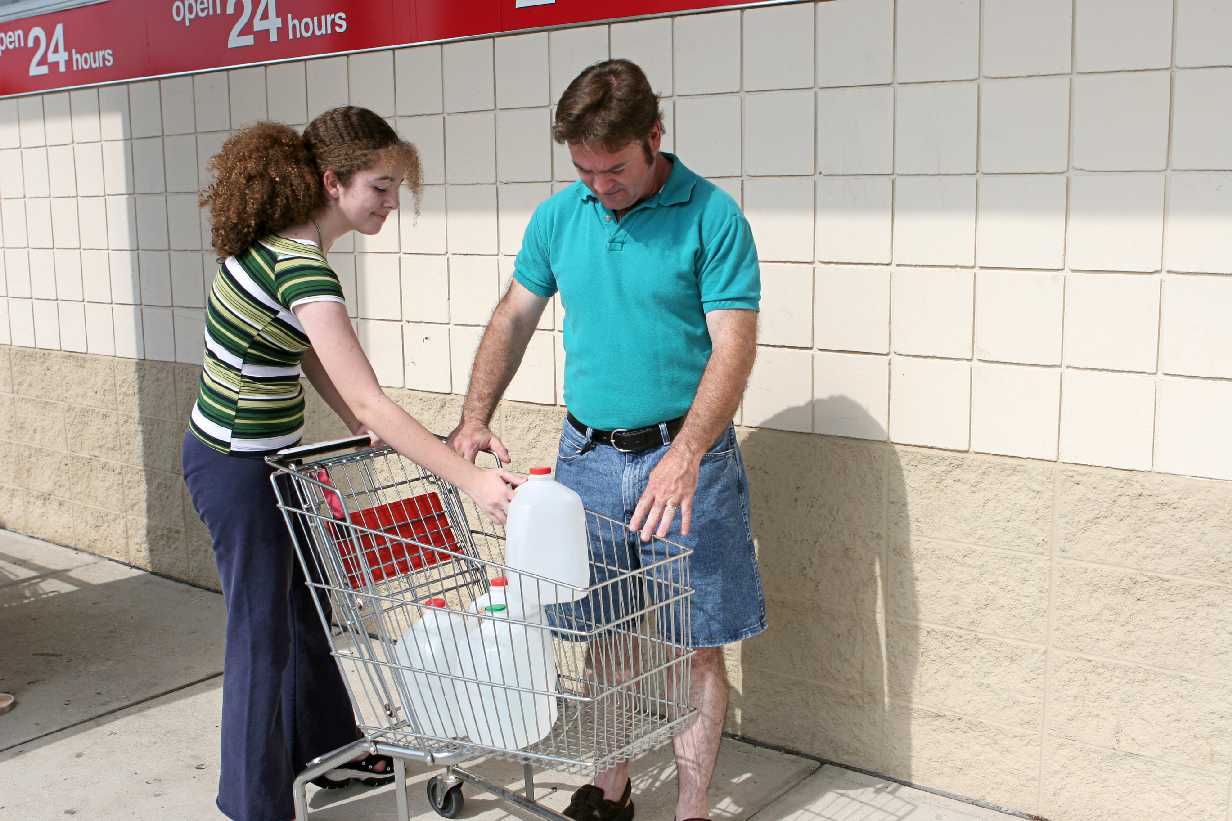As Marylanders batten the hatches for a hurricane, they’re hitting the grocery stores and big-box retailers in droves; it’s not uncommon to see checkout lines that are packed all the way back to the deli counter. Though you’ll see some carts piled so high that you can’t quite see who’s pushing them, you can keep your list streamlined for efficiency by loading up on some core essentials.
As Marylanders batten the hatches for a hurricane, they’re hitting the grocery stores and big-box retailers in droves; it’s not uncommon to see checkout lines that are packed all the way back to the deli counter. Though you’ll see some carts piled so high that you can’t quite see who’s pushing them, you can keep your list streamlined for efficiency by loading up on some core essentials.
In the event of a power outage, flashlights are your best friends; you should have at least one flashlight for each member of your household with a pack of back-up batteries to accompany each one. Though you may prefer the warmer glow of candlelight, the National Fire Protection Association counsels you against walking with lit candles or using a candle to guide you when you’re checking pilot lights or fueling equipment such as kerosene heaters or lanterns.
If you do want to use candles, be sure to keep the open flames away from any windows. You may also want to consider picking up some plywood and heavy-duty tape to armor your windows against piercing winds.
First aid kits, bottled water and nonperishable food items are some of the other emergency survival essentials. Your basic first aid kit should include a set of sterile gloves and dressings, scissors and tweezers, antibiotic and burn ointments, adhesive bandages and eye wash solution; if you take any prescription medications, you should have those on hand in addition to aspirin (or other non-aspirin pain relievers), antacids and anti-diarrhea medications. The equation for purchasing bottled water is one gallon of water per person for three days. This should help keep you (and your nearest and dearest) hydrated and help attend to any sanitation needs. Don’t forget to include your furry family members in this equation.
Though we may think of nonperishable food items as soup cans and boxes of noodles, there are a variety of filling – and nutritional – options available. Pre-cooked rice can be complemented with dried fruit and nuts (which are excellent snacks in their own rights). Canned tuna is an excellent source of Omega-3 fatty acids, though vegetarians many want to opt for canned beans instead. There a host of canned vegetables that can make a tasty addition to any improvised meal.
Dried fruits, jerky, whole grain crackers, granola bars, trail mix, dry cereals, electrolyte-laden drinks like Gatorade and Powerade and multivitamins are some other staples of an emergency foods pantry. Don’t forget to pick up a can opener while you’re stocking up. Also, don’t forget Fido or Fluffy and make sure they have enough food to last the storm.
In addition to these vital survival items, you may also want to consider picking up a deck of cards or a board game to help while away the time. Crossword puzzle books or Sudoku puzzles can help keep your mind off the torrents pounding down outside. Those who will be caring for small children should have some coloring and story books on hand.
Though the prospect of a storm is always unsettling, we can insulate ourselves and our families from its impact by making a few smart, strategic purchases.